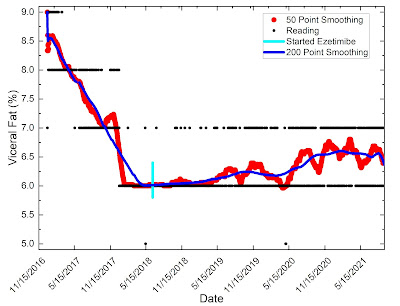Here is an email I sent to my students about publications and reputation based on a recent paper that just appeared online. I have removed names to conceal the names of parties that might prefer to remain anonymous.
Dear all,
A conversation about publications often comes up between graduate students and their research mentors. I know that we have talked about this multiple times. A valid concern of many students is the strength of their publications record, which is used by future academic employers. It is easy to count numbers of publications or metrics such as the h-index, but an individual’s reputation is based on substance not simplistic numbers.
First, the research itself must be interesting and useful to others. There are many papers that wow me even if I never cite them in my own research, winning my highest respect for those who create such gems. You should work hard and enjoy the process of making new discoveries, and then hold yourselves to the highest standards for the work that you produce. This is what will open doors to future employment.
The email below from one of my colleagues serves as an example of the reputation that you should seek to build over time. I hope that this kind of feedback motivates you to persevere through the next phase of your work. I certainly look forward to all the new insights that we will gain.
To conclude, I congratulate you for your contributions to this work. I know that some of you were frustrated having to rebuild experiments, repeat measurements, and rewrite the manuscript an endless number of times as we found errors in the calculations and problems with the apparatus. But in the end, I am proud of the final product, which I believe will be of use to others.
Happy New Year!
Best,
Mark G. Kuzyk
Regents Professor of Physics
Washington
State University
Pullman,
WA 99164-2814
Phone:
509-335-4672
Fax:
509-335-7816
Web
Page: www.NLOsource.com
From: [Colleague]
Sent: Wednesday, December 29, 2021 9:11 AM
To: Kuzyk, Mark G <kuz@wsu.edu>;
Mark G. Kuzyk <mgk.wsu@gmail.com>
Subject: Fwd: [Applied Sciences] Manuscript ID: applsci-1500266; doi:
10.3390/app12010315. Paper has been published.
Dear Mark,
I forwarded this new paper to my group members. You never cease to amaze me with the thoroughness and rigor of your research. What an amazing piece this last report is! We have a lot to learn from you, indeed.
I will enjoy reading the paper. I hope we can meet up at some point to continue our discussions. [My senior student] will be graduating in January and he wants to pursue a career in the corporate world. I have another student who is a bright and enthusiastic, and we can consider sending him to your lab, if the things with the pandemic get better.
Take care of your health,
[Colleague]
---------- Forwarded message
---------
From: Applied Sciences
Editorial Office <applsci@mdpi.com>
Date: Wed, Dec 29, 2021 at 5:02 PM
Subject: [Applied Sciences] Manuscript ID: applsci-1500266; doi:
10.3390/app12010315. Paper has been published.
To: Colleague
Cc: Applied Sciences Editorial Office <applsci@mdpi.com>,
Keira Wang <keira.wang@mdpi.com>
Dear [Professor],
We are pleased to inform you that "Photothermal and Reorientational
Contributions to the Photomechanical Response of DR1 Azo Dye-Doped PMMA
Fibers" by Zoya Ghorbanishiadeh, Bojun Zhou, Morteza Sheibani Karkhaneh,
Rebecca Oehler, Mark G. Kuzyk * has been published in Applied Sciences as
part of the Special Issue Composite and Smart Materials: Theory, Methods and
Applications and is available online:
Abstract: https://urldefense.proofpoint.com/v2/url?u=https-3A__www.mdpi.com_2076-2D3417_12_1_315&d=DwIDaQ&c=slrrB7dE8n7gBJbeO0g-IQ&r=8Rjnp4aNhHPBrmgt9k4Q6f-pu3z01qzkXZBySmc4rd8&m=o0b_FSbvMnSOnSSq65_Iqvm2Lzwws_d1R8DePemMmvVRGF0JjKCizRgc6-aV4Ati&s=NKk5yL3BySXUrbhhOaPR0aUISAStEHsLXfIt9ZbVctk&e=
HTML Version: https://urldefense.proofpoint.com/v2/url?u=https-3A__www.mdpi.com_2076-2D3417_12_1_315_htm&d=DwIDaQ&c=slrrB7dE8n7gBJbeO0g-IQ&r=8Rjnp4aNhHPBrmgt9k4Q6f-pu3z01qzkXZBySmc4rd8&m=o0b_FSbvMnSOnSSq65_Iqvm2Lzwws_d1R8DePemMmvVRGF0JjKCizRgc6-aV4Ati&s=t6QVhD-mbZqQY846ZCCoE2JzF67xY6qSi5A7TOImY3k&e=
PDF Version: https://urldefense.proofpoint.com/v2/url?u=https-3A__www.mdpi.com_2076-2D3417_12_1_315_pdf&d=DwIDaQ&c=slrrB7dE8n7gBJbeO0g-IQ&r=8Rjnp4aNhHPBrmgt9k4Q6f-pu3z01qzkXZBySmc4rd8&m=o0b_FSbvMnSOnSSq65_Iqvm2Lzwws_d1R8DePemMmvVRGF0JjKCizRgc6-aV4Ati&s=KrUea9tNwtMeC4JC2sXiRHNYB_UMo3nUyRQqeZfdlq4&e=
Special Issue:
https://urldefense.proofpoint.com/v2/url?u=https-3A__www.mdpi.com_journal_applsci_special-5Fissues_composite-5Fsmart-5Fmaterials&d=DwIDaQ&c=slrrB7dE8n7gBJbeO0g-IQ&r=8Rjnp4aNhHPBrmgt9k4Q6f-pu3z01qzkXZBySmc4rd8&m=o0b_FSbvMnSOnSSq65_Iqvm2Lzwws_d1R8DePemMmvVRGF0JjKCizRgc6-aV4Ati&s=8xdNAgcPAFbBFvgIf7SzfgeGSZTqc2tWgqC4aTa4zB4&e=






